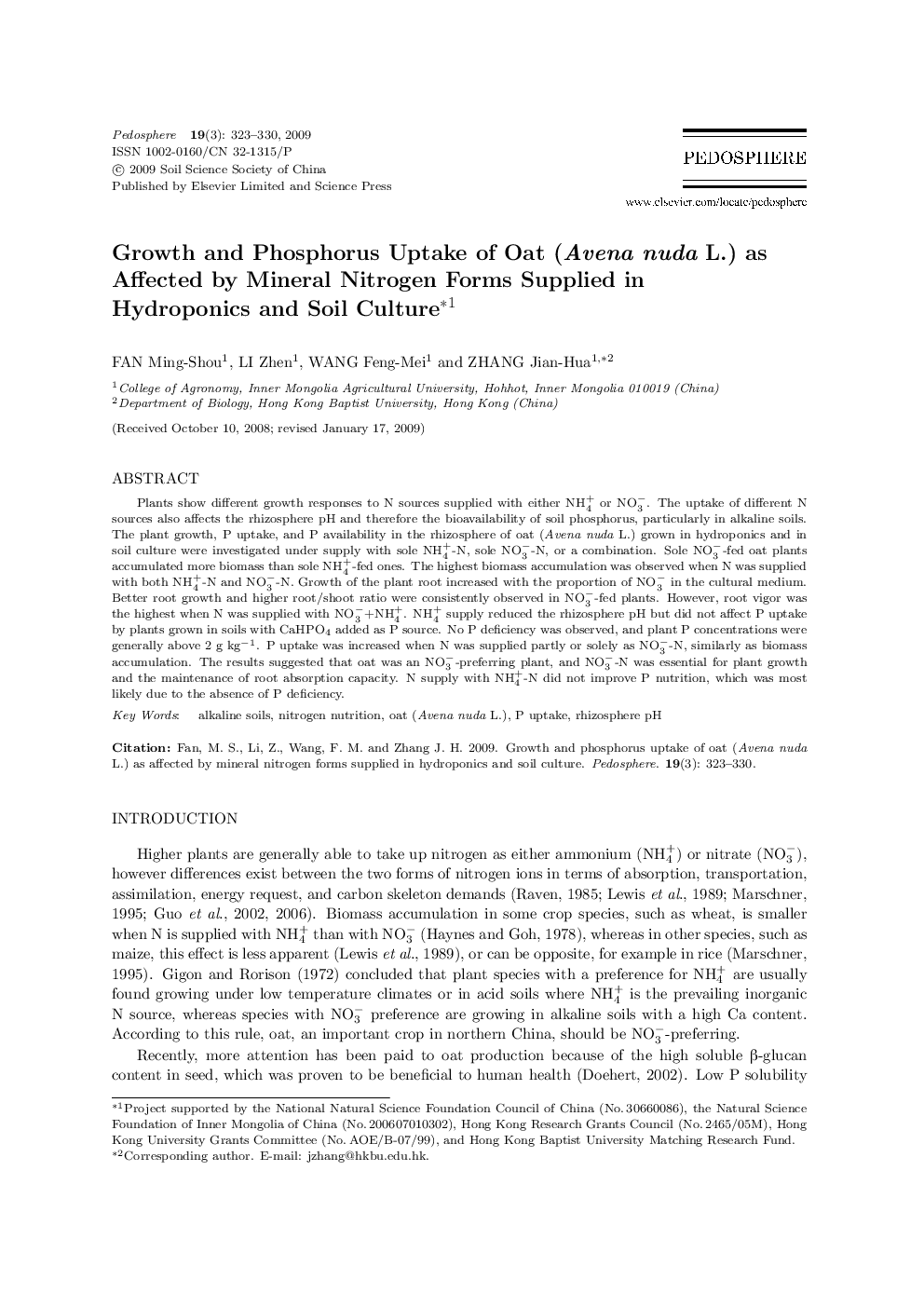| کد مقاله | کد نشریه | سال انتشار | مقاله انگلیسی | نسخه تمام متن |
|---|---|---|---|---|
| 4581980 | 1333730 | 2009 | 8 صفحه PDF | دانلود رایگان |

ABSTRACTPlants show different growth responses to N sources supplied with either NH+4 or NO−3. The uptake of different N sources also affects the rhizosphere pH and therefore the bioavailability of soil phosphorus, particularly in alkaline soils. The plant growth, P uptake, and P availability in the rhizosphere of oat (Avena nuda L.) grown in hydroponics and in soil culture were investigated under supply with sole NH+4 -N, sole NO−3-N, or a combination. Sole NO−3-fed oat plants accumulated more biomass than sole NH+4 -fed ones. The highest biomass accumulation was observed when N was supplied with both NH+4 -N and NO−3-N. Growth of the plant root increased with the proportion of NO−3in the cultural medium. Better root growth and higher root/shoot ratio were consistently observed in NO−3-fed plants. However, root vigor was the highest when N was supplied with NO−3+NH+4. NH+4 supply reduced the rhizosphere pH but did not affect P uptake by plants grown in soils with CaHPO4 added as P source. No P deficiency was observed, and plant P concentrations were generally above 2 g kg−1. P uptake was increased when N was supplied partly or solely as NO−3-N, similarly as biomass accumulation. The results suggested that oat was an NO−3-preferring plant, and NO−3-N was essential for plant growth and the maintenance of root absorption capacity. N supply with NH+4-N did not improve P nutrition, which was most likely due to the absence of P deficiency.
Journal: Pedosphere - Volume 19, Issue 3, June 2009, Pages 323-330